
|   |

|   |
Mohan Khokar: Pioneering scholar-collector-historian - Ashish Mohan Khokar, Bangalore e-mail: khokar1960@gmail.com Based on archival materials from The Mohan Khokar Dance Collection October 31, 2009 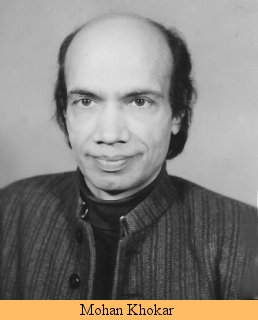 Sept 17th being Mohan Khokar's tenth death anniversary, we recall his work and worth, especially for internet readers who were born after his era. In Indian dance, there are very few original, pioneering, scholars who are pan-Indian and know each form intrinsically. Early 19th century writers were region bound. Thus an E Krishna Iyer knew much about Bharatanatyam or southern traditions but may not have been exposed at all to Manipuri, Chhau, Kathak, Bhangra, Rauf, Gidda or Tappa. Thus, such great writers were bound by the state or region they hailed from. Dance writing or research as a discipline was very personal and most early accounts, G Venkatachalam or Sambhamoorthy's were moored to their settings. Kerala writers wrote on reviving Kerala arts; Tamil writers would write on Bharatanatyam or Andhra traditions. There was no one from north or anyone who knew west and east equally well. History gave this role to Mohan Khokar. The first truly pan-Indian writer on dance, someone who knew all folk forms, someone who was at home with details of each classical form and someone who first-hand documented (when the word was not even invented! and did this so equally for all forms of dance, including weddings and funerals) rituals like Teyyam or Bhagavata Mela Natakam, was Mohan Khokar. History and several hundred articles in several magazines, newspapers and journals, worldwide, in the last 60 years are proof of that. Mohan Khokar was born on 30th Dec 1924 in Quetta, now in Pakistan and he was always joking (he had a very subtle sense of humour and joked only with those he felt close to or trusted) that if only he had waited two days, he would be a year younger because just being born on the second last day of the year meant his age got enhanced by a year unnecessarily! He was the Dev Anand of dance - forever young of heart - with healthy glowing skin and well preserved body, until the only time he fell ill in his life was one final call when cancer claimed him in September 1999. His father, Sardar Bhagat Ram Khokar, was the Commissioner of Defence, then posted in Quetta, where Mohan Khokar was born. Quetta was the capital of Baluchistan province, now in Pakistan. A Sikh by religion, he was brought up to respect all dharmas, After Quetta was destroyed in a massive 7.1 Richter scale earthquake on May 31, 1935, Mohan Khokar, then only ten, lost all his relatives and close friends and could never understand how Nature could be so furious. Even as a youngster, those days, he documented the earthquake with his camera and these albums remain historical material. 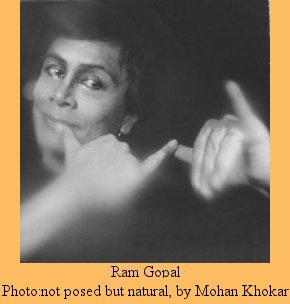 A good student, he was put in the most prestigious college run by American missionaries, the Foreman's Christian College, Lahore, where after the earthquake, his father got posted. Lahore was the Paris of East; Delhi was then just a village. While in college, he fell in love with one beauty called Rani, who was learning Kathak of the Punjab Gharana. Yes, we know only of two major gharanas, the Lucknow and Jaipur, but long before Jaipur, Kharaigarh or Benaras was the Punjab Gharana. We are talking of 1930s and the 40s. Rani (sister of famous dancer Tara Chaudhari, who partnered Ram Gopal) however did not return his feelings he has noted in his book on Uday Shankar (by way of humour again) and thus to impress her and win her back, Mohan Khokar thought why not learn dance itself! By the time he found a good teacher, Pt. Pyarelal, he had lost interest in Rani (who in any case had not returned his feelings for her!) and fell for new and more lasting love - dance itself! Uday Shankar was a major influence on him, thus he shortened his name to Khokar to match and rhyme with Shankar! The original family name was most sardars are known as Khokar. It is a brave, fearsome group of supremely loyal sardars that stopped Mohammed Ghori from invading India and were the chief reason Alexander the Great too could not reach far. History books speak about the Khokars. There is still a village by the name of Khokarapura in undivided Punjab. And all history textbooks mention Khokars as frontier people to be feared! Tales of their bravery and loyalty to Mother India are too many to recount here. No wonder Mohan Khokar's father was in the British army and in charge of the biggest garrison in Asia, Quetta, then Lahore and last posting was Meerut after Ambala. The family lost two houses, one in the Quetta earthquake because though the house survived the earthquake, thanks to blessings of a Sufi Pir, the town had to be completely evacuated. Lahore was left behind in partition of India and the last house was built in Chandigarh. Seeing Ram Gopal and his troupe in Lahore made Mohan Khokar sit up and realise the beauty of Bharatanatyam and to learn it, he left Lahore for Madras. Sounds simple but imagine 1945 India, train rides costing weeks and more and reaching a totally alien place where he knew not a soul! All to learn dance! He knew he had to somehow reach a dance school called Kalakshetra. Fortunately, he hailed from a sturdy stock that could not be discouraged easily and thus plodded along. He was greatly supported and looked after like a son by a lady called Rukmini Arundale, who ran the dance school, then located in the Theosophical Society. Mohan Khokar came to Madras in Dec of 1945, and other than love for Bharatanatyam, he had only one name known to him in Madras to him, that of Baby Saroja who had come with Ram Gopal to perform and stayed at his family home with Tara Choudhari, local hosts. But Mohan Khokar got so immersed in learning Bharatanatyam that he forgot to look the Saroja family up until one day he saw a huge film hoarding in Myalpore and read the name MK Saroja in a Lux soap advertisement too! He could not believe that Baby Saroja had blossomed into a beautiful maiden, all of 16 and famous dancer to boot! Kalakshetra kept him busy and Athai (as matronly Rukmini Arundale, the founder-director was fondly called by all) took special care of him as he was the first male student from north India. She told the canteen to make chappathis for the boy from Punjab for how could he eat rice in various forms all the time? Rukmini athai remained his important teacher as did Periya Sarada, who was hardly 5 years older than him so, when she was to teach the inner meaning of padams and felt shy, she sent him to the Adyar library, thinking this lad from north be best left to learn meanings of padams from dull, dry books. That is how Mohan Khokar got hooked on to books, library, research, and documentation. He copied most books in the library in pencil and these remain very useful as the library later burnt down and the photocopier machine had not been invented. 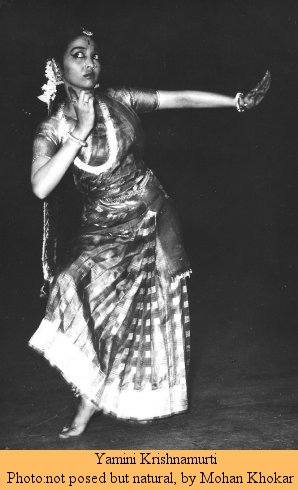 This love for the written word made him hungry for more material on dance but in 1940s there was hardly any literature on Indian dance. Visiting foreigners wrote either in glowing terms of things they thought were exotic or they wrote disparagingly when they did not know much! Stray articles with beautiful costumes but no clue decorated dance writings. Mohan Khokar took upon himself first to learn more and then to share that knowledge with all, through his writings. That he took his own photos helped a lot because those days few had cameras and fewer took dance photos as it was too expensive a proposition, since films were imported from abroad. This winning combination of a qualified writer who took his own photos stood him in good stead and thus he contributed significantly to our understanding of dance in 1950s to 1990s. There was just no one even remotely comparable to his indepth scholarship of dance, command of English language and exemplary documentary proof or visual support. Mohan Khokar thus remains a pioneer without parallel and his lifetime work speaks for it. At 20, he was writing for national magazines and journals and as he took his own pictures he was very welcome. Soon, many prestigious mags and papers like Free Press, The Illustrated Weekly of India, Pushpanjali and Marg sought his contributions and the bulk of writing in 50s to 80s is done by him. Definitive Marg issues till date are relevant on Orissi, Bharatanatyam, Kathak, Chhau and Manipuri. He married the star Bharatanatyam dancer on Dec. 14, 1949 and the same day he received a telegram asking him to appear for an interview at a faraway place called Baroda. He was not keen to leave his wife but his mother-in-law said please go and try. He was appointed without hesitation because there was no one else in India at that time who could have all necessary qualifications, plus extensive field work. He joined the MS University Baroda in 1950 and stayed there for 12 years. At 24, he was the head of dance dept, the country's first, teaching dance at graduate level and his colleagues in other faculties were all equally known names like Bendre sahib for Painting; Sankho Choudhury for Sculpture and NC Mehta for Drama. Mohan Khokar set the Course still in use 50 years later! And emulated by other universities. He helped old masters and musicians be gainfully employed as regular staff and they retired as government staff with full benefits. He did much for artists and many can vouch for that. It was no wonder that with his standing and outreach, the Education Ministry in Delhi, sought his services as Special Officer for Dance and took him on loan from the Baroda University, a loan they never returned! He was a Special officer for Dance and reported directly to the Education Minister. He was placed at the Sangeet Natak Akademi, where he served for 18 years, last five as its Secretary, albeit in an acting capacity, because of the ways of bureaucracy and the politics of Delhi was too fearful of his honesty, yet, could not do without his expertise! He was the only pan-Indian dance scholar and after him, Kapila Vatsyayan. His chairmen, KPS Menon senior, Vice Chair PL (Pula) Deshpande were all men of great eminence and standing and supported his work and worth. Under them, lots of artists and rare forms, then facing near-extinction, like Koodiyattam, Ottan Thullal, Chhau, were supported. Thanks to that support, children of these gurus learnt the form and one generation continued. Along with Charles Fabri, he helped project Orissi when it was neither established, accepted or nationally known. He personally looked after the welfare of gurus and senior artists and juniors could always walk into his office for help, advice or guidance. While he was authoritative, and respected for his scholarship and standing, he was never autocratic. His own wife neither got any shows at the Akademi functions or even an award. She got it 15 years AFTER he had left the Akademi, so strict was he. GS Rajan, a former Deputy Secretary and full-time flautist and composer par excellence recalls that he has seen files where Mohan Khokar has noted that "since MK Saroja is his wife, she should not get any programmes or favourable treatment." Such integrity and honesty is hard to come by, especially today when all caution is thrown to winds in many ways. As a serious documentor/photographer of dance, who shot live, while a performance was on (and never posed) his photos were celebrated world over and when the Indian Postal Dept wished to release a set of 6 photos showing 6 prime classical forms (not 7, later when Orissi got added or 8 when Sattriya got added ), they asked Mohan Khokar to give the photos. When UNESCO wished a bibliography of Indian dance done, they asked Mohan Khokar. When Stockholm Dance Museum was set up, they asked Mohan Khokar. 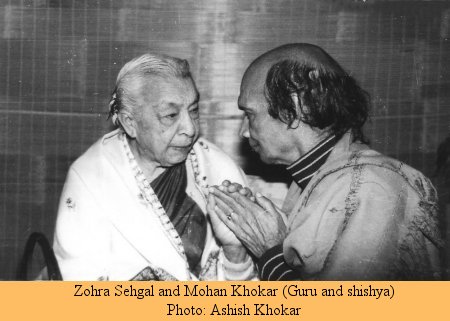 He offered the Collection as donation to many dance related institutions like the NCPA, IGNCA, National Archives, but each had a special situation: museums wanted artefacts from the Collection and not paper materials and Archives wanted paper materials (photos, books, memorabilia) but not artefacts! He desired to travel to enhance, update and augment the Collection but while they wanted this Collection worth crores, few wished to spend a penny on the Collector. Mohan Khokar tried various combinations and then gave up, assured in the fact that universe and nature had conspired to send someone to look after it and make its proper use, in keeping with the wishes of its creator. It fell on yours truly to undertake that historical responsibility. 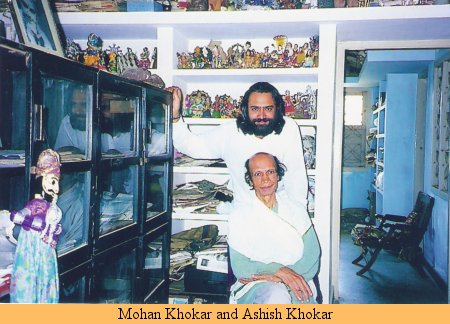 No book on last 100 years of Indian dance history can be completed without this material. Why books? Even Ph.D students need reference materials and critics, if they chose to write in depth, or with historical proof. Many biographies have been done, based on this Collection. The national agencies don't have much material before 1960s. Documentation as a word was invented only in the late seventies. Mohan Khokar was far ahead of his times. The Mohan Khokar Dance Collection is known and celebrated and sought after by many. The Collection (dancearchivesofindia.com) continues to look for a suitable home as it has grown many fold, with more additions done by yours truly, its inheritor, in the last 20 years. Many precious materials come the Khokars' way as natural gifts from many dancers and gurus. Veterans and seniors who know that between two Khokars their histories are safe and secure, wish to donate all they possess but the limitations of space and resources stop the Khokars from accommodating all. Between two individuals, The Mohan Khokar Dance Collection, is priceless and the only direct record of dance history in last hundred years. Mohan Khokar's vision was for the glory of art, for dance itself. He felt his work was his award and he was happy it would continue after him. Mohan Khokar's end years got him Emeritus Fellowship from the Dept of Culture to continue his research work and he used the time to contribute slice of history to various specialised journals like Sruti and The Statesman. He wrote 5 definitive books, all out of print and very much sought after. His writings alone need to be digitised and preserved. He remained devoted to dance till his end on 17th Sept 1999 and his spirit continues to serve dance..... Responses 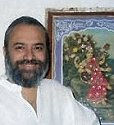 Ashish Mohan Khokar takes special delight in reconstructing dance history. His own Masters in Indian History (merit lister, Delhi University) helps him in this process as also his inheritance, born as he is to the most distinguished dance family. His father created India's largest dance archives, materials from which now helps him save and serve; rewrite and reconstruct dance history of India. His own world vision (having practically handled many high level projects all over Europe and America) and vast exposure to variety of cultural administration and involvement at home in India, have furthered the process of making him unparalleled, in his generation. He has watched dance for almost 45 years now born to a legendary dance mother, and written about it in last 30 as critic of leading publications (Times, India Today), in addition to his own over 35 books and editing-publishing India's only yearbook on dance, attendance. attendance-india.com |